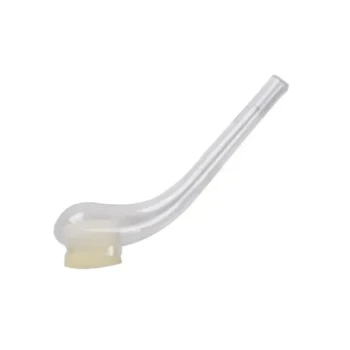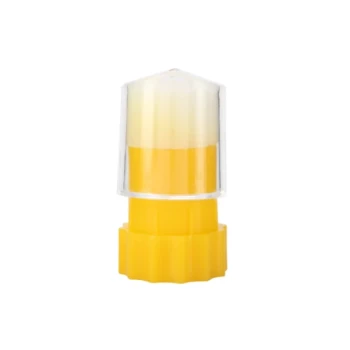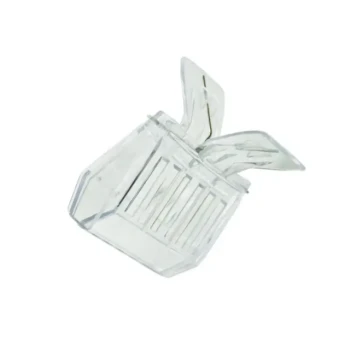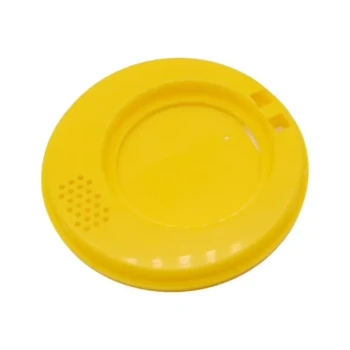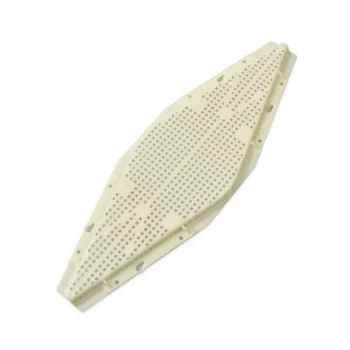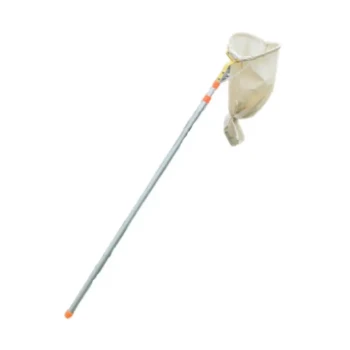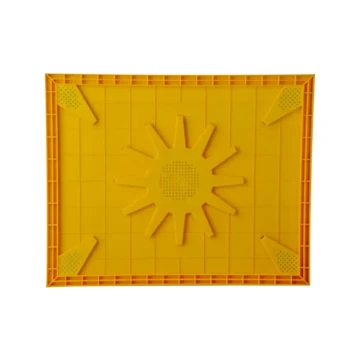Finding the queen bee is a targeted action taken for specific, high-stakes colony management tasks. It is most often necessary when executing advanced swarm control methods, such as a Pagden artificial swarm or creating a nucleus colony, and when requeening a hive, which requires removing the old queen before introducing a new one.
Finding the queen is a specific, and often disruptive, intervention—not a routine inspection goal. The real task is to assess her performance. For most inspections, confirming the presence of fresh eggs and a healthy brood pattern is a more efficient and reliable indicator of a colony's health.
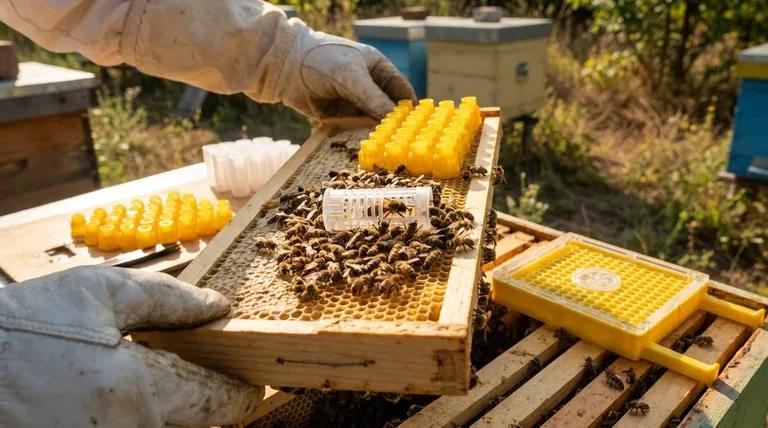
The Queen's Central Role in the Colony
To understand why finding the queen is sometimes necessary, you must first appreciate her function. She is not a ruler, but the reproductive engine and chemical unifier of the hive.
The Sole Source of New Bees
The queen is the only member of the colony who lays fertilized eggs. Her productivity directly determines the colony's population, its ability to gather resources, and its long-term survival.
The Producer of Social Pheromones
The queen produces a unique set of pheromones that signal her presence and health. These chemicals are spread throughout the hive, regulating colony cohesion, suppressing worker ovary development, and contributing to the hive's overall calm and sense of identity.
When Finding the Queen is Essential
While you don't need to see her on every inspection, certain management goals make finding the queen a non-negotiable step.
Executing Advanced Swarm Control
Methods like an artificial swarm (the Pagden method) or creating a "split" rely on separating the queen from the majority of the brood and bees. To do this, you must physically locate her and move her to the new hive box to mimic the natural swarming process under your control.
Requeening a Failing or Undesirable Hive
If a queen is failing (evidenced by a poor laying pattern) or has undesirable genetics (e.g., aggression), you may decide to replace her. You must find and remove the old queen before introducing a new one, as the workers will kill the new queen if the established one remains.
Confirming a Suspected Queenless State
If you see no eggs or young larvae for an extended period, the colony may be queenless. While this is often confirmed by the absence of her work, a final visual check can confirm she is truly gone before you take corrective action, like adding a new queen or a frame of eggs from another hive.
The More Common Approach: Assessing Her Work, Not Her
Finding the queen can be time-consuming and disruptive to the colony. For routine health checks, it's more effective to look for the evidence she leaves behind.
The Best Sign: A Healthy Brood Pattern
A high-quality queen lays eggs in a tight, consistent pattern. When you look at a frame of brood, you should see a solid, compact area of capped cells, with very few empty cells in between. This is the single best indicator of her health and performance.
The "Smoking Gun": Finding Fresh Eggs
Seeing freshly laid eggs—tiny white specks resembling grains of rice, one per cell—is definitive proof that a queen was present and laying within the last three days. If you see fresh eggs, there is rarely a need to continue searching for the queen herself during a routine inspection. A spotty, inconsistent pattern, however, indicates a potential problem.
Making the Right Choice for Your Goal
Your reason for opening the hive should determine whether you need to invest the time to find the queen.
- If your primary focus is a routine health check: Look for fresh eggs and evaluate the brood pattern. There is no need to find the queen.
- If your primary focus is preventing a swarm: You must find the queen to move her as part of an artificial swarm or split.
- If your primary focus is improving colony genetics or performance: You must find and remove the old queen before introducing her replacement.
Understanding when to search for the queen—and when to simply look for her work—is a hallmark of an efficient and thoughtful beekeeper.
Summary Table:
| Situation | Action Required | Key Indicator |
|---|---|---|
| Routine Health Check | Do NOT find the queen | Look for fresh eggs & a healthy brood pattern |
| Advanced Swarm Control | MUST find the queen | To move her for an artificial swarm or split |
| Requeening the Hive | MUST find and remove the old queen | Before introducing a new queen to prevent conflict |
| Suspected Queenless State | CONFIRM by finding her (or lack thereof) | No eggs/larvae for an extended period |
Optimize your apiary management with the right tools.
Whether you're a commercial apiary managing hundreds of hives or a distributor supplying fellow beekeepers, having reliable, high-quality equipment is fundamental to performing precise tasks like finding the queen, requeening, and swarm control.
HONESTBEE supplies the durable beekeeping supplies and equipment you need to work efficiently and effectively. We support the success of commercial operations and equipment distributors through our wholesale-focused model.
Contact our team today to discuss your wholesale needs and discover how our products can enhance the productivity and health of your colonies.
Visual Guide
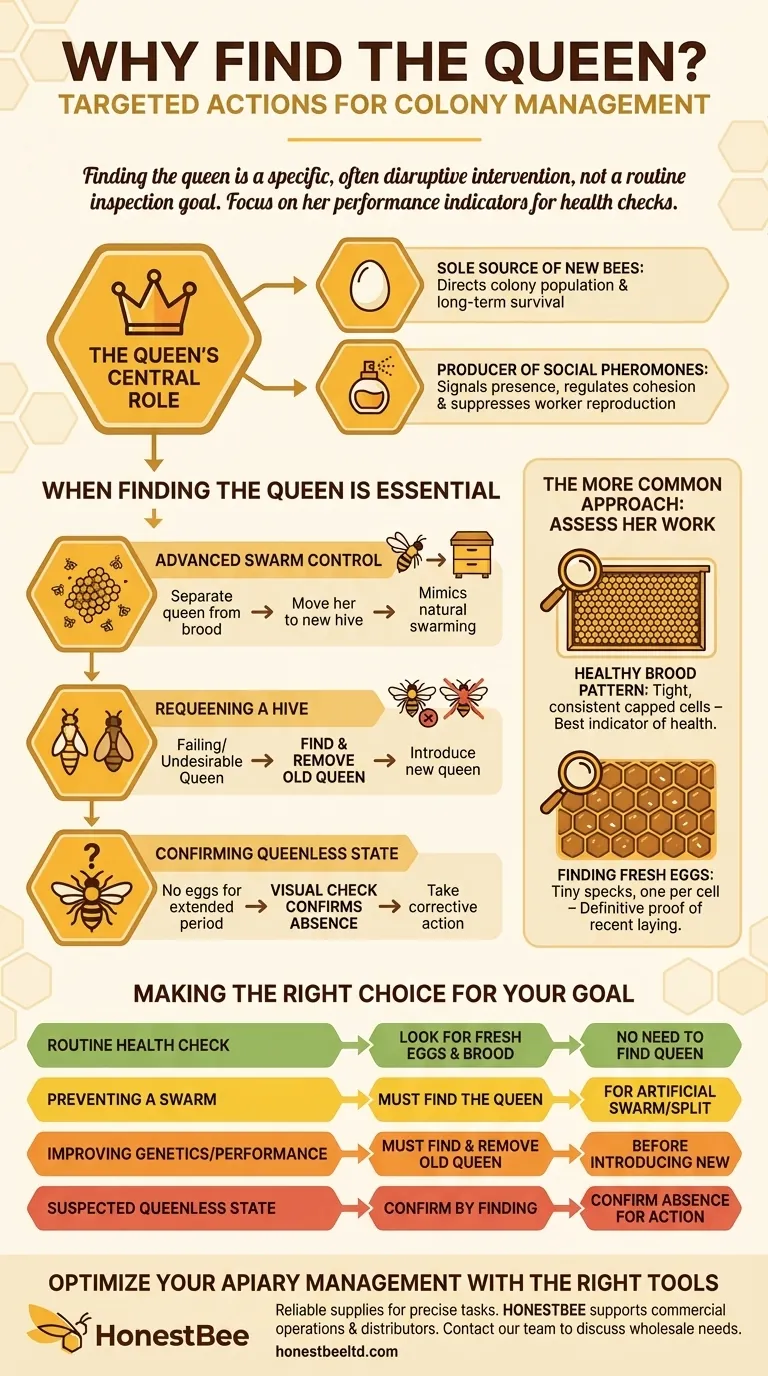
Related Products
- Jenter Queen Rearing Kit Complete Set for Bee Breeding
- Nicot Queen Rearing Kit for Beekeeping and Grafting in Nicot System
- No Grafting Queen Rearing Kit: System for Royal Jelly Production and Queen Rearing
- High Performance Plastic Queen Excluder for Beekeeping and Apiary Management
- Premium Wood Framed Metal Wire Queen Bee Excluder
People Also Ask
- What is queen rearing in beekeeping? Take Control of Your Apiary's Genetics
- How long does it take for a new queen to emerge, mate, and lay eggs? A Beekeeper's 10-14 Day Guide
- Why is raising queens beneficial for beekeepers? Gain Control Over Genetics and Costs
- What are the stages involved in queen raising? A Guide to Controlled, High-Quality Queen Production
- What are the implications of delayed oviposition in queen bees? A Strategy for Superior Queen Quality









